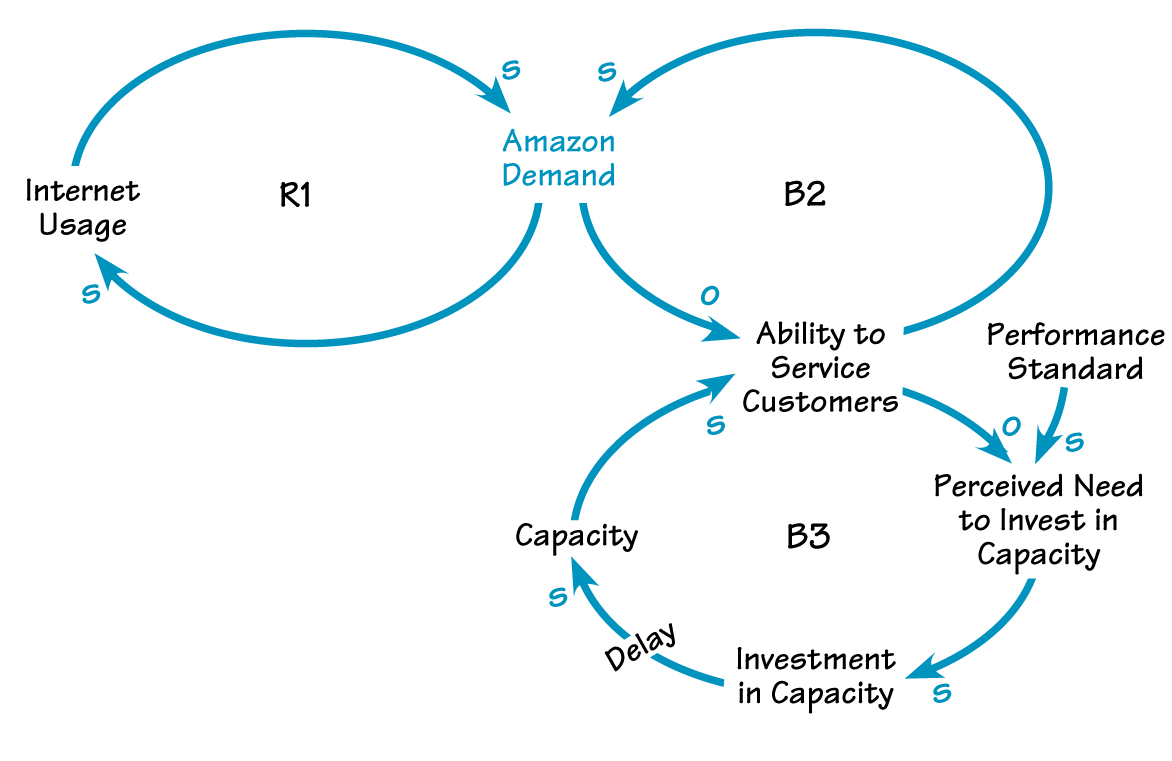In the February issue of THE SYSTEMS THINKER (Volume 10, Number 1), we launched the new Systems Thinking Workout column. In the column, we present an interesting scenario from organizational life. We then invite readers to identify significant patterns and systemic structures in the story and send in causal loop diagrams, behavior over time graphs, or stock and flow diagrams that capture those structures.
Several of you have sent in causal loop diagrams capturing key dynamics from the February story about the recent explosion in online shopping. Henry Frechette, from Organizational Dynamics, Inc., identifies a “Limits to Success” scenario. Genene Koebelin, from the Adult and Organizational Learning program at Suffolk University, builds on that interpretation by offering a “Growth and Underinvestment” analysis. Both interpretations, outlined below, offer valuable perspectives on the growing phenomenon of online shopping as experienced by Amazon.com and other online retailers.
If You Build It, They Will Come—But Will They Stay?
If You Build It, They Will Come—But Will They Stay?

As Henry Frechette explains, “The main driver of the business is marketing, which leads to sales, revenues, and profits, with a parallel reinforcing loop involving product diversity and a resulting boost in sales” (see R1 and R2). But these two reinforcing loops are controlled by two classic limiting processes. One is shown in B3 in the diagram: As orders rise sharply, the company is caught off guard and lacks the capacity to fulfill them efficiently. Customer satisfaction—and then sales—drop. In addition, when sales are healthy, competitors (such as the online Barnes and Noble bookstore) are drawn to the new market, making it harder for any one company to garner a lion’s share of the business (B4). Customer dissatisfaction has other side-effects as well: It prompts the company to make efforts to regain customer approval, which is expensive (B5); at the same time, it makes customers all too willing to take their business elsewhere (B6).
A Craving for Capacity

Genene Koebelin looks at Amazon.com’s situation through a “Growth and Underinvestment” “lens,” with a focus on the need to invest in capacity in order to handle the expected boom in orders. As she explains, “The ‘Growth and Underinvestment’ structure would lead us to believe that Amazon.com is doing the right thing in building capacity to meet future demand and holding onto its vision of being a dominant supplier of books and other products on the Internet.”
